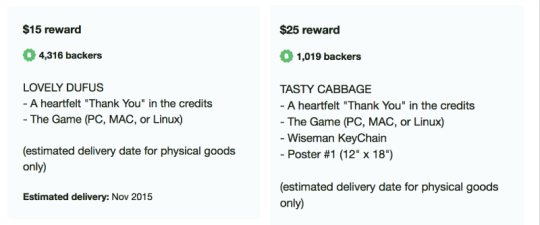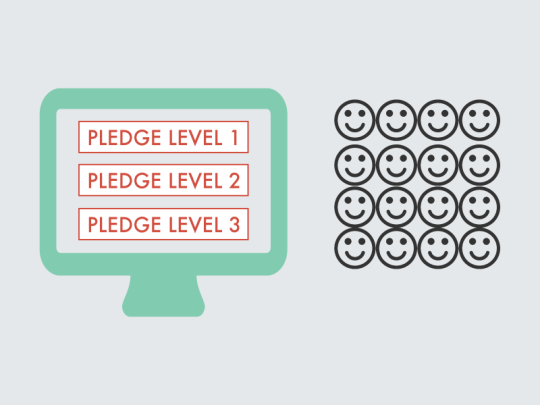If you make things as clear and convenient as possible, you’ll inspire more pledges and prevent future problems at the same time. In our last post, we discussed setting up pledge levels to create momentum early on in your Kickstarter or Indiegogo campaign. In this post, we’ll be talking about a few more things you can do with your pledge levels to make it as convenient as possible for potential backers to pledge.
Create a Pledge Level Around $25
The most popular Kickstarter pledge site-wide is $25. Given this information, it’s safe to expect that if you create a good pledge level around $25, it will be fairly popular. It’s also not a bad idea to have multiple pledges under $30, along with an ultra-low tier that offers to keep people in the loop with the latest updates (See last week’s blog post here for more on the benefit of the $1 pledge level). The moral of this story is, even if your product is considerably more expensive, don’t miss out on the support of backers who’d love to support you at a lower tier.
Make Pledge Levels Below “Market Value”
Create pledge levels that provide a discount from the expected future price of the item. It’s not uncommon to see Kickstarter and Indiegogo projects that offer backers a chance to show their support and “get in early” without actually offering any kind of discount.
This is particularly popular for music projects, which commonly set a $10 pledge level for a digital album download that will be available for $10 on iTunes as soon as the album is released, anyway. You’ll inspire more pledges, though, if you offer a price incentive to pledge now, rather than later. Be sure to make these details clear on your page, too, so people know what kind of discount they’ll be getting.
Then, you can take this a step further in your bulk pledge levels. If your basic pledge boasts a $25-per-item price discount, your bundled pledge level for two items could offer a $30-per-item discount, and so on for higher levels. That way, you’re giving people a reason to pledge now and to pledge more, while allowing them to feel great about their choice to opt for a higher-ticket pledge level.
Provide Concise and Consistent Pledge Descriptions
Now that you’ve chosen your pledge levels, you can make it as easy as possible for your backers to understand how to proceed with their pledges. You should refer to rewards with the exact same terms in the description of each pledge level. If your $25 T-Shirt pledge description contains the phrase, “1 Orange Carrot T-Shirt,” make sure you repeat that exact phrase for every pledge level that will be receiving that particular shirt.

A great example of pledge description continuity from ToeJam + Earl
Include Shipping Fees
Even though it involves advertising a higher price for each item, it’s totally worth it to add domestic shipping fees into the overall price of each pledge level. Every Kickstarter and Indiegogo project has to sort out international shipping fees by asking domestic backers to pledge extra for shipping. It’s much less confusing for both you and your backers if they only have to pledge one time to cover the total cost of their reward.
When figuring out your shipping fees, you should take great lengths to actually find out what it will cost to ship things out, too. International shipping fees require a little more work afterwards, mostly because people don’t always remember to add extra funds to cover shipping to their respective countries. Luckily, BackerKit makes it easy to allow international backers to add the appropriate shipping fees to their pledges, even after the campaign is over.
All in all, the most convenient pledge levels for your backers usually end up being the most convenient pledge levels for you, too. Offer backers rewards they’re happy to pledge for, and they’ll be happier overall about your project. If you make this experience clear and easy to understand while you’re setting up, you minimize the problem solving you’ll have to do later on.
We hope this marks the start of an exciting crowdfunding adventure ahead of you.
